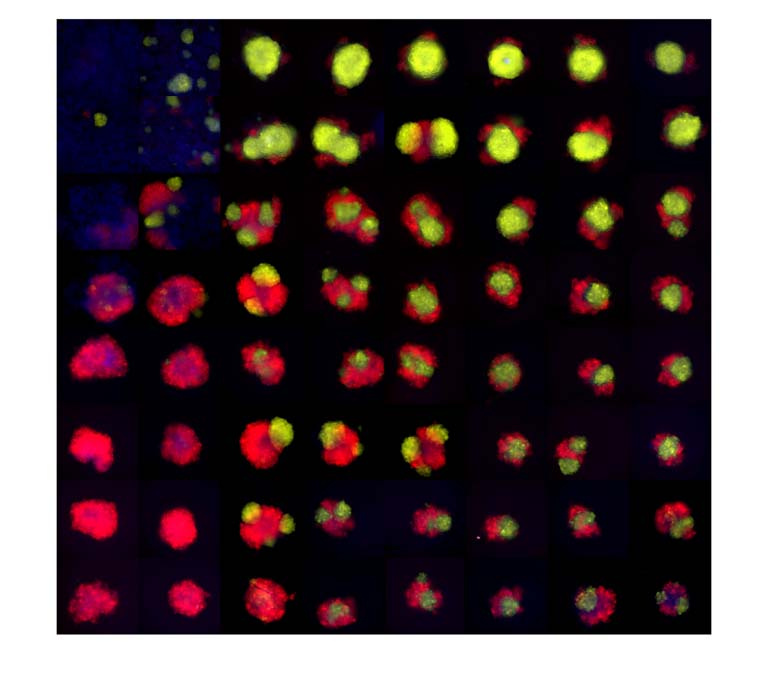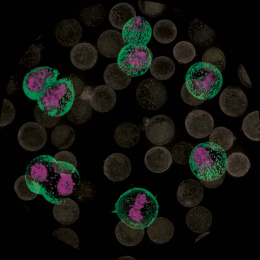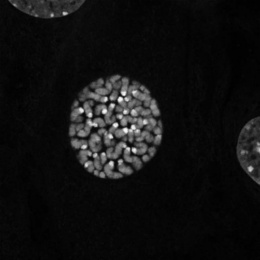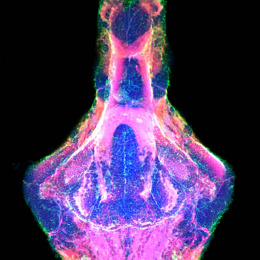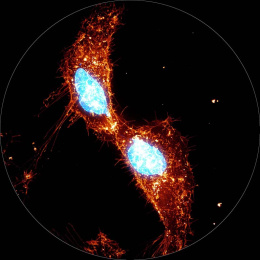Asymmetry, Polarization, Clustering, and Budding in Dividing Cells
Asymmetry, Polarization, Clustering, and Budding in Dividing Cells
Noreen Wauford, Akshay Patel, Jesse Tordoff, Casper Enghuus
Synthetic Biology Center
In development, a single cell repeatedly divides to form hundreds of unique cell types precisely arrayed into complex patterns. To better understand these processes, we can recreate simple models of them in the lab.
These 64 different shapes were generated using synthetic biology, where we used a genetic circuit to program mammalian cells to split into two daughter populations and then self-assemble. Each shape represents a different ratio of parent cells (in blue) and the two daughter populations (in red and yellow). We engineered both types of daughter cells to express cell adhesion proteins, which play an important role in bringing cells together in precisely the correct way to make organs. Populations that are mainly parent cells (upper left) are lacy and spread out, whereas populations that are mainly daughter cells show a wide variety of cores, clusters, and sizes.
